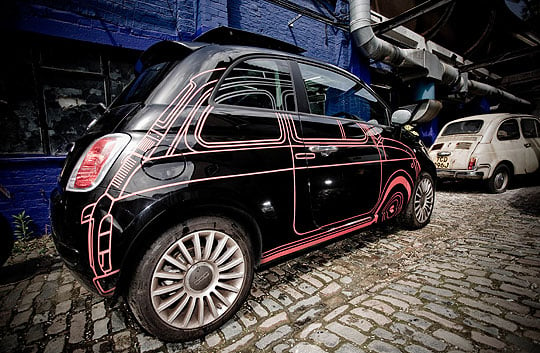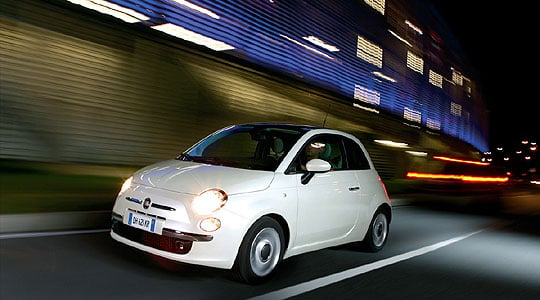
Retro design is a modern concept, says Chris Hrabalek, that has created new icons…
The new MINI and new Fiat 500 are topping the charts as the most desirable small cars currently available to image-conscious drivers; never mind that both are déjà-vues of the bygone era of mass-motorisation, supersized in the reincarnation to modernity.
Retro cars arguably find their Adam and Eve in two key products, both developed in the mid-eighties and both debuting at the end of the same decade: the Nissan Figaro and Mazda MX-5. Interestingly enough, both cars debuted in the same year (1989) and both are of Japanese origin. While the former featured styling of an earlier era, the latter honoured an automotive icon through an original style interpretation. Both cars were a commercial success, with demand outstripping supply from day one and arguably paving the way for the ‘retro’ era in car design.
While it would have been unthinkable for an OEM manufacturer to introduce a replica or retro car pre-1990s, today it is almost a necessity to offer at least one product in the line-up that pays homage to the past. And while, in the 50s and 60s, no career-striving executive would have dared to suggest the re-birth of a retro-inspired Ford Model T, this same brand gave us the 1995 Ford GT 90 and the 2005 Ford GT – thereby creating the styling bookends for retro design (with the Ford GR-1 Concept as the best of both worlds, somewhere in between).

One of the characteristics of retro design is that it’s only relevant with something iconic or noteworthy in the first place. The original Mini and Fiat 500 both qualify. While, conceptually speaking, a modern take on both these icons could have been more along the lines of a Toyota iQ or Tata Nano, in stylistic terms the new MINI and new 500 updates couldn’t have been more of a bulls-eye success. Classics are often worshiped by non-owning enthusiasts, to whom it’s a surprise, when actually driving one, how disappointing the product really is… but the new MINI and new 500 are safe from overheating and double de-clutching.
Design-wise, the new MINI and Fiat 500 are very similar in concept. They are both aiming to disprove that small cars need to prioritise functionality; instead, they give preference to an emotional approach that is amplified through numerous fall-in-love detailing both on the inside and out. Essentially, their styling is a modern update with all the design-substance now taught in reputable car design degree courses. The most interesting fact to note is that MINI, whose current car is already the second incarnation, has chosen a similarly mild design evolution to that seen on such products as the 911. It shows how a retro design can be facelifted with enormous subtlety.

It remains to be seen if retro cars will continue to exist 100 years from now. Naturally, as with fashion design, a new generation of stylists takes inspiration from the products of a previous one. However, one could argue that retro design resulted from cars becoming increasingly similar in the eyes of the public, losing character in the process, and hence creating the necessity to revitalise icons from the past that are visually proven and at the same time distinctive.

With the introduction of alternative vehicle drive-trains and the electronics that come with them, vehicle architecture has the opportunity to take a radical leap away from the mechanically limiting layouts of the past. In this way, stylists are given the ingredients to create products that are as visually progressive as they are distinctive, and thus they shape the future for another generation of stylists to ‘quote from’ in the years to follow.
Text: Chris Hrabalek
Photos: Ron Arad / MINI/ Fiat
ClassicInside - The Classic Driver Newsletter
Free Subscription!




